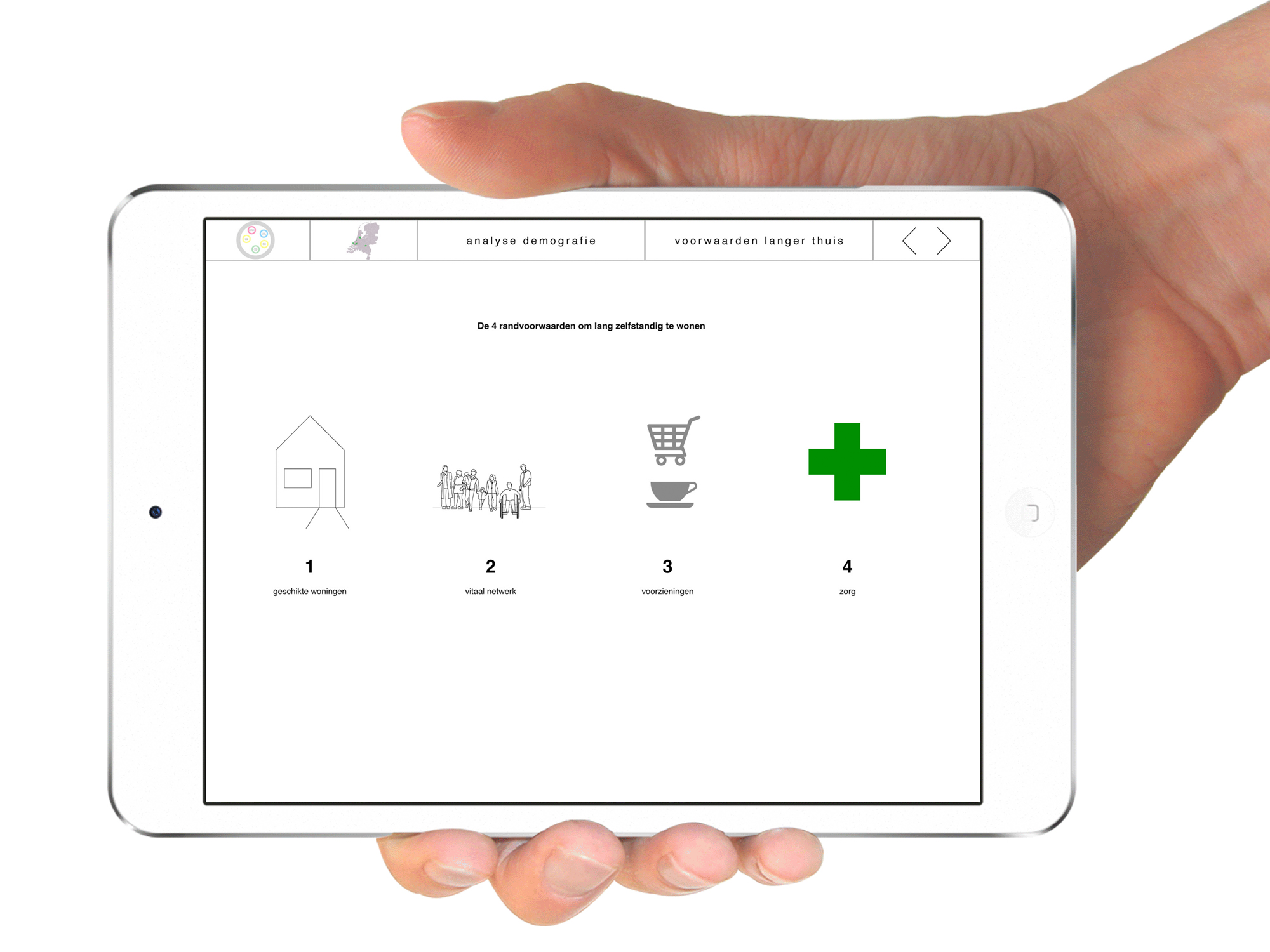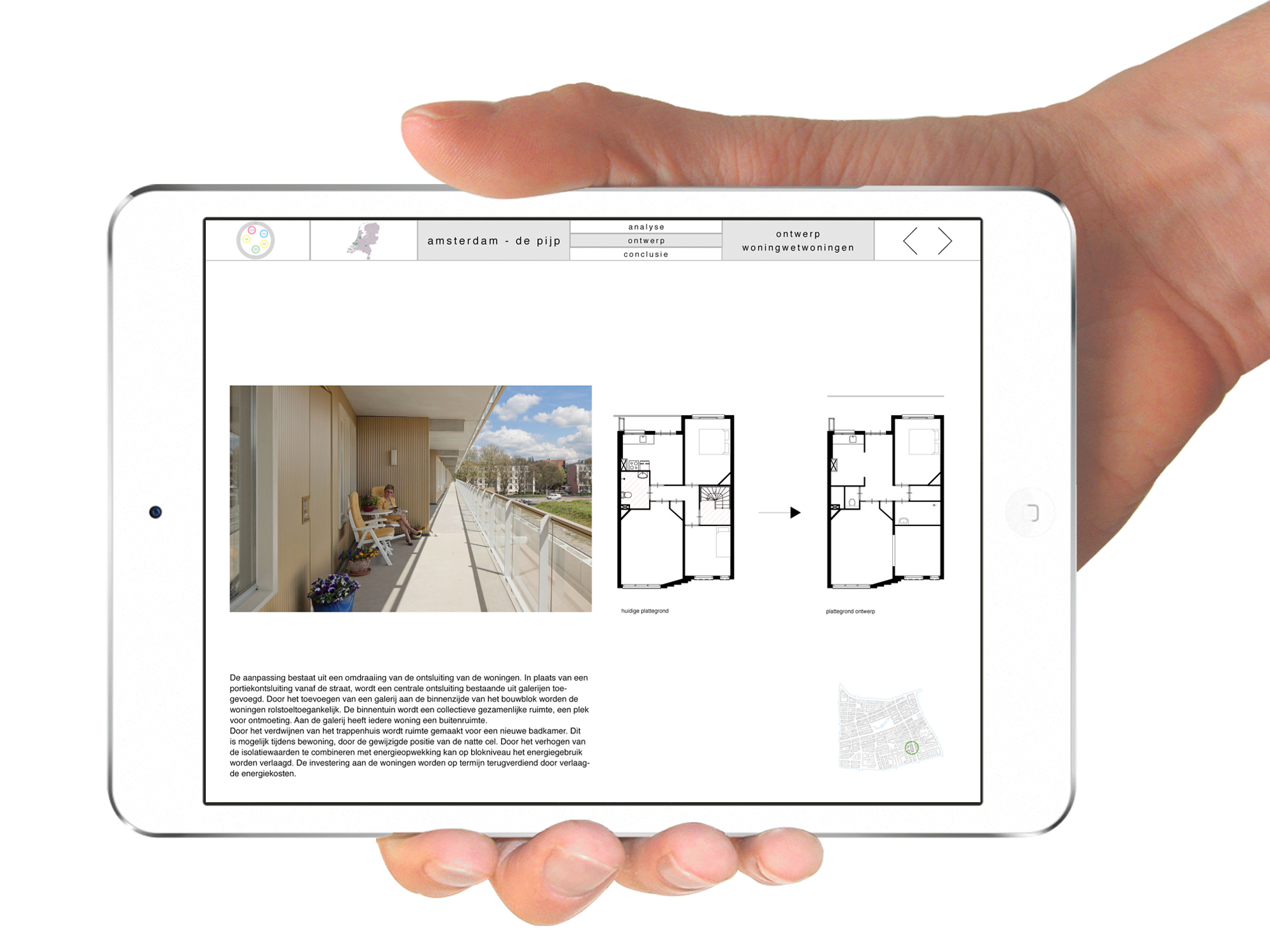langer (uit het) t(e)huis, ,



As a result of the double aging population, a considerably larger group of older people will appeal to care and adapted housing in the coming years. Until 2040 the Netherlands is facing major demographic developments, coupled with changes in the healthcare system, this will increase the pressure on the affordability of care.
In order to reduce costs, only more intensive care needers may call on the elderly housing as reimbursed by the Long-Term Care Act. The housing component for the lighter care demand, which previously took place in the nursing home or the “sheltered residence”, is no longer reimbursed. This lighter care demand has now become a task of the municipality. Who have, with the Social Assistance Act, the mission of the Kingdom to let the elderly live longer at home.
From a social commitment we, as architects, feel obliged to think about the urban, spatial, financial and programmatic implications of these developments.
Within specific neighbourhoods in Amsterdam, Leiden, Oss and Rotterdam, this design research is looking from an perspective of the national care tasks to local conditions for living independently. From a thorough analysis, concrete proposals have been made that allow for a “longer home”.